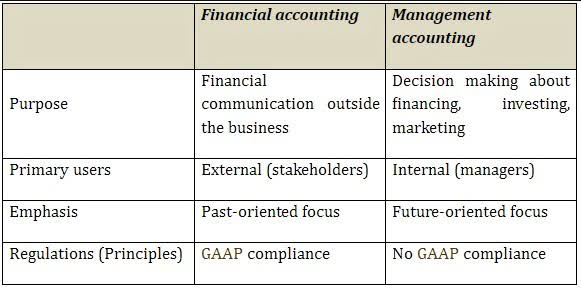
In addition to understanding what payroll fraud is, it’s important to know what the most common forms of payroll fraud are so you can be on the lookout. Payroll fraud can be detrimental for all businesses in all industries, but particularly small businesses. Understanding how to detect payroll fraud and what can be done to prevent it can help your business avoid detrimental losses. Request a Checkwriters demo today to secure your payroll and access more resources and tools to help protect your organization from payroll fraud. Make sure employees have easy access to their pay stubs and payroll records so they can double-check their pay for accuracy. Transparency can help employees spot errors before they escalate, and gives them confidence in the fairness of the process.
How Can Technology Help Prevent Payroll Fraud?
This figure determines how much can be garnished for debts Accounting for Marketing Agencies like child support or student loans. Employers and employees each contribute 6.2% for Social Security and 1.45% for Medicare, with self-employed individuals paying the full 15.3% through self-employment tax. A deduction is an amount subtracted from an employee’s gross pay to cover taxes, benefits, or garnishments.
Common types of payroll fraud

In some cases, this info can be used electronically, significantly increasing the risk of fraud. Payroll solutions augmented with Artificial Intelligence and Machine learning capabilities enable you to detect anomalies. In this payroll fraud, either employees’ grades are altered, or their hourly rates are changed to qualify them for a higher payment than they are entitled to. This fraud happens due to the collaboration of employees with the human resources (HR) and payroll departments. In many big companies or MNCs, the organizations often offer employees expense funds for education, training, or supplies, even on some maintenance and repair costs, travel cost, and more. In those cases, a false expense claim occurs when employees Certified Public Accountant submit the fraud details of their spending to the organization.

Step 3: Cross-check Payroll with Time and Attendance Records
- Well-hidden fraud is not obvious to most business owners, and it is not always intentional.
- This includes segregating duties, implementing dual authorization processes for payroll changes, and ensuring that only designated personnel have access to sensitive payroll systems and data.
- You can do an in-depth review of the whole payroll system or select a random sample of dates and employees.
- Among those, the common types of payroll fraud are buddy punching, disappearing between a punch in and out, timesheet padding, and more.
- Employers and employees each contribute 6.2% for Social Security and 1.45% for Medicare, with self-employed individuals paying the full 15.3% through self-employment tax.
- To enhance payroll security, Steinhauer explained that businesses can implement both technical tools and human-related training.
- Additionally, enforce strong password policies that include complexity requirements and regular password changes to further reduce the risk of unauthorized access.
At least that’s what work management platform Rippling has accused its main competitor—global payroll company Deel—of going after in a corporate espionage lawsuit filed on Monday. Rippling says that Deel hired a “spy” employee to steal Rippling data, including sales tactics, product pricing and employer payroll frauds customer retention strategies. Tax compliance refers to the process of ensuring all payroll taxes, deductions, and filings adhere to federal, state, and local regulations. Failing to comply with tax laws can result in significant penalties; the IRS collected over $13 billion in payroll tax penalties in 2023 alone. Back pay refers to wages owed to employees for past work due to errors, disputes, or legal claims.
What are the Most Common Forms of Payroll Fraud:
This is more common in companies where supervisors manage large groups of people, and are not reviewing compensation in detail as a smaller organization might. Another red flag is multiple direct deposits to the same banking account or the issuance of checks to multiple employees at the same address. You should limit the access to payroll information to only selected employees who perform essential functions in payroll processing.
- A payroll solution integration with HCM suites ensures seamless flow of data for an error free payroll processing.
- For instance, one employee might enter payroll data, another approves it, and a third manages fund distribution.
- Whistleblower reports can help flag suspicious activities that may otherwise go unnoticed.
- Scams By Third PartiesPayroll fraud is frequently conducted internally; however, it can also be committed by third parties.
- Prioritizing payroll fraud prevention will ensure the long-term success of any organization while safeguarding its valuable resources and reputation.
Organizations can use system access control, keystroke tracking or installing CCTV systems to prevent fraudulent activities of payroll data. These three types of overpayment fraud schemes are typically internal issues and, therefore, harder for an outside payroll company to detect. While Complete Payroll does its best to help detect payroll fraud, we recommend that your company implement practices such as separation of duties to try to prevent payroll fraud. This type of payroll fraud occurs when a manager creates or inflates higher pay rates, overtime rates, commissions, or bonus pay. This type of fraud usually happens at the manager or executive level, since this scheme has to have a manager sign off on fraudulent timesheets and overtime pay rates.
Review Payroll Reports

For example, AI can identify unusual login patterns, such as a user logging in from various locations or at unusual times. To enhance payroll security, Steinhauer explained that businesses can implement both technical tools and human-related training. On the technical side, email clients can flag first-time messages from unknown senders, and AI can detect common scam methods. These imposters can make the correspondence look very real by using company logos, signatures and email addresses. From start-ups to big MNCs, everyone is facing payroll fraudulent issues recently.


